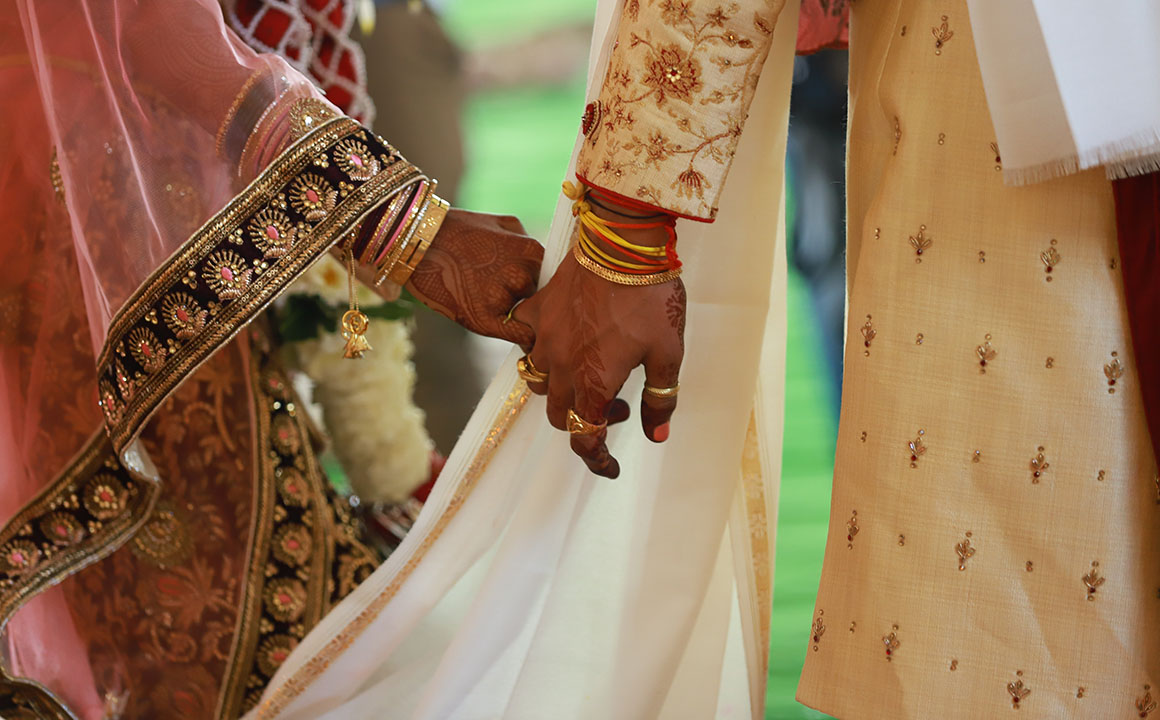The Role of Bride and Groom’s Family in a Marathi Wedding Ceremony

Marathi weddings are eventful, and a cause of celebration, but the various rituals performed, tie the couple and their families in a bond that lasts for an eternity. The bride and groom’s families follow rites and rituals starting from much before the wedding and lasting till much after the wedding ceremony.
Marathi wedding ceremonies are the perfect opportunity for the couple’s families to come together to celebrate and practice old traditions that lead to the big day. Speaking of the big wday, are you also keen to meet the one with whom you can share your life? Then why wait any longer? Let us help you find the perfect match. You can visit any Marathi Matrimony site today and discover your future life partner.
Pre-Wedding Rituals:
SakharPuda
The engagement ceremony called SakharPuda happens once a family priest matches the horoscopes of the bride and groom. This ceremony is the first official ceremony of the Marathi wedding. Before the engagement ceremony, the groom’s parents give the bride a saree with some green bangles. This gift is worn by the bride later on the day of engagement. Once the ring ceremony is complete, the groom’s parents offer a sugar packet (SakharPuda) to the bride, which signifies the sweetness that she’ll add to their lives.
Kelvan
The Kelvan ceremony takes place two weeks ahead of the wedding. The ceremony includes a puja held for the deities in both families. Family members and friends join the ceremony, and both the bride and groom’s parents invite the other side of the family to host them for lunch. In this event, family members meet and greet each other and revel in each other’s happiness.
Wedding Rituals:
Ganpati Puja & Punyahvachan
At the start of the wedding day, the bride is offered chuda by the groom’s parents. The day begins by offering prayers to Lord Ganesha for his blessings to the would-be couple. The family prays for the couple to have a healthy and prosperous future. Following the puja, the bride’s parents ask the family members present at the mandap to bless their daughter for her new beginnings.
Devdevak & Seeman Puja
Before the wedding, the family’s deities are brought to the mandap so that everyone can offer their prayers. Once the groom enters the mandap with his family members, the bride’s mother provides him with sweets, washes his feet, and applies tilak on his forehead.
Gaurihar Puja
The maternal uncle gifts the bride her wedding attire. Before the wedding ceremony, once the bride is ready, she’s taken for the Gaurihar puja, where she prays for the happiness of her future life as a wife. She prays to the silver idol of goddess Parvati, placed on top of rice and mango leaves.
Antarpat and Sankalp
For this ritual, the bride and groom are separated by a curtain in between to avoid looking at one another called Antarpat. The groom enters the mandap with a turban over his head, and the bride enters with her maternal uncle. The curtains get removed so that the couple can exchange garlands.
Kanyadan
This ritual signifies the strength and bond shared between the father and daughter. Since the father is giving away the responsibility of his child to her the groom, it shows that he trusts him to take better care. Following the kanyadan, the groom’s sister ties the end of the bride’s saree to the groom’s scarf. The knot holds a few ingredients as well, such as rice, coins, and some areca nuts to mark the beginning of their bond, shared for eternity. This small ritual is also said to bring some peace and happiness to the bride and groom’s lives.
Karmasampati
During this ritual where the couple is praying to the holy fire, the bride’s brother does a playful act. He pulls at the groom’s ears to signal him about his new responsibilities as a husband and his marriage. These small rituals signify the closeness of the bond between the two families and honor the newlywed couple’s love.
Post-Wedding Ritual:
Grihapravesh
Once the wedding ceremony is over, the new bride enters the groom’s house for the first time, now as the groom’s wife. Before the couple enters the house, the groom’s mother performs aarti and washes the couple’s feet with milk and water. The bride then lightly kicks at the kalash (utensil) filled with rice at the door entrance, marking the entry of goddess Laxmi into the home. The couple enters the house with their right foot forward. She gets introduced to the rest of the family members, who greet and welcome her into their home.
The role of both families is equally important and necessary for the wedding ceremonies. It adds a sense of togetherness between the family members and relatives and strengthens the bond shared between the couple over time. These shared bonds can later be a source of utmost happiness, wisdom, and endless celebrations in the lives of both the bride and the groom.
Don’t wait – instead, create your Marathi Matrimony profile today and take one step forward.
Share via:





Leave a Comment